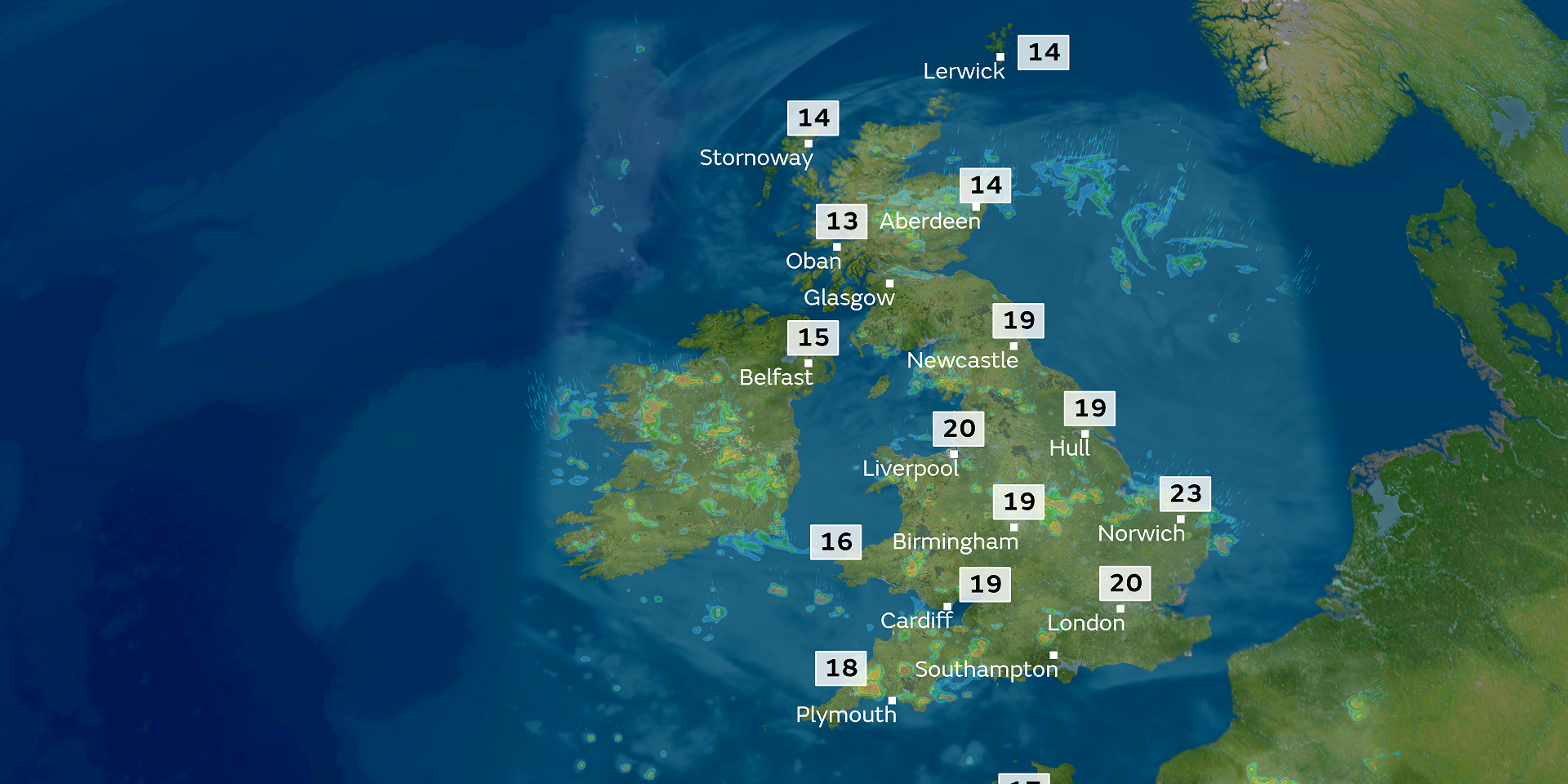-
Posts
2,342 -
Joined
-
Last visited
-
Days Won
1
Content Type
Forums
Blogs
Gallery
Events
Learn About Weather and Meteorology
Community guides
Posts posted by Ben Sainsbury
-
-
ESTOFEX have a very talented bunch of forecasters, but imo I don't feel they pay much attention to the UK. Regardless, It's just clear they're too busy at the moment to issue a forecast for Europe as they're voluntary.
-
 4
4
-
-
ECM 12z increasingly unstable for Mon-Wed now. Tuesday has 1200J/Kg across Central England which is some of the highest I've seen from the model for our shores.
-
 6
6
-
-
Due to the highly unstable and relatively moist atmopshere, storms could pop up almost anywhere from Sunday night to Tuesday night in my opinion. Just have to hope any crud from elevated thunderstorms doesn't inhibit any strong/severe convection the following day.
-
 7
7
-
 1
1
-
-
44 minutes ago, FetchCB said:
UKV is part of the Met Offices unified model. Its not based on the UKM its part of it.
 Unified Model
WWW.METOFFICE.GOV.UKThe Unified Model (UM) is a numerical model of the atmosphere used for both weather and climate applications.
Unified Model
WWW.METOFFICE.GOV.UKThe Unified Model (UM) is a numerical model of the atmosphere used for both weather and climate applications. Numerical weather prediction models
WWW.METOFFICE.GOV.UKThe Unified Model is run operationally in a number of configurations for weather forecasting at the Met Office.
Numerical weather prediction models
WWW.METOFFICE.GOV.UKThe Unified Model is run operationally in a number of configurations for weather forecasting at the Met Office.It's not always that easy to understand, but the UKV is linked to the UKMO. The UKV utilizes the boundary conditions from the UKMO, so effectively the UKV will use the bigger picture (outside the map boundaries of the model) from the UKMO and then runs its own forecast based on the boundary conditions at that time (I think that's how it works).
-
 1
1
-
 1
1
-
-
- Popular Post
Just thought I'd take a little bit of a deeper look into the Thunderstorm Risk for Sunday/Early Next Week.
Saturday night would expect a few elevated thunderstorms to approach S Ireland/far SW England but nothing too much of note at this point.
Sunday we see some quite large CAPE developing across Ireland and less so for N England/Scotland. I'd expect a combination of strong surface heating/convergence zone/orographic lifting to initiate scattered thunderstorms, possibly strong/severe at times given modest DLS over Ireland.
By Sunday night, as the low gradually drifts a touch eastwards, I would expect storms to become increasingly elevated as the boundary layer cools with some impressive lightning shows right across the Irish Sea and up towards NW England/Scotland, given the magnitude of MUCAPE.
Monday looks to have a more widespread thunderstorm risk, with large instability (for UK standards). With a slack low sat right over the UK, wind shear will likely be weak, however given the magnitude of instability, some strong thunderstorms are likely to develop again; this time across much of England, Wales and into S Scotland. Shear across NW England/N Wales is less weak, so some organisation is possible for a time here. Storms becoming increasingly elevated overnight.
The last day I'm going to cover is Tuesday given there are still uncertainties on the positioning of the low near the UK. However, I would expect a similar day to Monday albeit the risk transferring a bit further south. Strong thunderstorms developing once again, however as the low pulls south there are some indications that modest wind shear will exist across C/E England. Assuming this (UKV) to be the case, then multicellular development is possible with the potential to upscale into a homegrown MCS into the evening. Flash flooding, prolific lightning and relatively large hail are the likely risks. But at this stage, this is all speculation and to be taken with a large pinch of salt.
That saying, there is relatively good agreement between the models for Monday at least to be a fairly active day, some a close eye is being kept on model developments over the next few days.
-
 21
21
-
 3
3
-
Good model consistency now for more widespread thundery activity Monday/Tuesday than there was a few days ago. Relatively large magnitude of instability forecast on majority of the models.
-
 3
3
-
-
From what I've seen, models have been firming up on a few scattered thunderstorms from Monday-Wednesday. Airmass still warm, so probably a loaded gun setup with the risk of homegrown elevated storms overnight. At the moment N Wales, Peak District and up to the Lake District seems most at risk so far, but obviously a good 5 days out yet.
-
 7
7
-
-
10 hours ago, damianslaw said:
Recent years have delivered barely any thunder and lightening here. We had a couple of strikes on the 2nd June but so far nothing.
The exceptional heat 2 weeks came to an end with a whimper.. can only think due to the exceptional dry air.
Quite possibly, but I guess there is no concrete way of knowing! This has to be the worst year for homegrown activity that I can remember.
-
 2
2
-
-
12 minutes ago, wimblettben said:
I know!
It seems to keep changing from one day to the next these day's and quite often a number of different forecasts will all be saying a different thing from each other on the same day.
Never no what to even expect anymore or whats going to happen from one day to the next as it keeps changing so much.
Models have been performing quite poor lately regarding any convective activity. Though at the moment today seems to be going to plan. Ed is right though, ConvectiveWeather for example is probability of lightning within a 25 mile radius. That's actually quite a large area and too often people will see they're under a SLGT for example and expect to see a storm when in reality that's only approx 30-45% chance of lightning with 25 miles.
-
9 minutes ago, Peachy said:
Folks who say it's too windy for storms need to remember that just because it's windy at lower levels doesn't mean it's windy higher up where the storms are building.
Definitely more chance of storms today than yesterday.
I'm not sure I agree with these statements. Technically, you want it windy higher up because this is effectively what wind shear is. Even if it is windy as the surface, it has a negligible impact on storm development.
Personally, I wouldn't say there is more chance of storms today... if anything I'd say the opposite. But the important thing to note today, is the difference in storms. Those yesterday was elevated thunderstorms whereas today we're expecting a few surface-based thunderstorms.
-
 1
1
-
-
7 minutes ago, Justin1705 said:
Anyone going in a chase today?
I'm not entirely sure it's going to be as active as some other forecasters suggest. I'm a bit skeptical about chasing today, but will make the drive should a cell become organised enough to utilise some upper level wind shear, though am working this evening eek!
-
1 minute ago, Alderc said:
Looks like quite a bit of rain is reaching the ground.
Well that's good news at least!
-
 1
1
-
-
1 minute ago, Alderc said:
Some spectacular CG’s coming down from super high bases.
Gonna pose a problem then as they move inland.
-
 6
6
-
-
Quite a lot of lightning strikes given the precipitation rates on the radar, just shows how high the cloud bases are and how much precipitation is evaporating before it hits the ground.
-
 3
3
-
-
Ignore, wrong thread.
-
UKV 9z still wants to kick off an isolated but severe surface-based thunderstorm across East Midlands into NE England next hour or two.
-
 2
2
-
-
Even if skeptical of Charlwood, it's now approaching .5C above the record and temperatures continuing to rise, it's inevitable to break record anyway.
-
 3
3
-
 2
2
-
-
Hearing 38.8C has been provisionally hit now.
-
 7
7
-
-
6 minutes ago, Nick L said:
So, Emley Moor last night didn't drop below 23.9C, therefore it's a record minimum night. However, the Met Office are discounting it because it reached a lower temperature after 9am the previous day. Absolutely ridiculous.
Such a flawed system if that is the case, ugh.
-
 2
2
-
-
2 minutes ago, ChezWeather said:
Can we see this more accurate data anywhere buddy?
I've just been using
 Weatherobs
WEATHEROBS.COMGlobal weather observations (METAR, SYNOP, BUOY, SHIP, TAF, CWOP) decoded to enable display of latest temperatures, weather, snow depths, precipitation, wind and wave conditions and more
Weatherobs
WEATHEROBS.COMGlobal weather observations (METAR, SYNOP, BUOY, SHIP, TAF, CWOP) decoded to enable display of latest temperatures, weather, snow depths, precipitation, wind and wave conditions and more-
 1
1
-
-
1 minute ago, ChezWeather said:
Lakenheath also now at a possibly rounded 38c on Netweather top 20
Yep 37.6C.
-
 4
4
-
-
-
It's all to play for.
-
 1
1
-
-
1 minute ago, Nick L said:
37.1C at Heathrow at 2:30pm. We just might do it.
Very close to that 100F. With higher 850s continuing to progress northwards, I'd expect at least 2 or even 3 hours of heating left to go.
-
 4
4
-












Storms and Convective discussion - 1st August 2022 onwards
in Storms & Severe Weather
Posted · Edited by Ben Sainsbury
You've lost me
Just for the rest of the people here, it might be helpful to explain what "Storm-Relative Wind", "Streamwise Vorticity" and "Net Vorticity Tilting" is